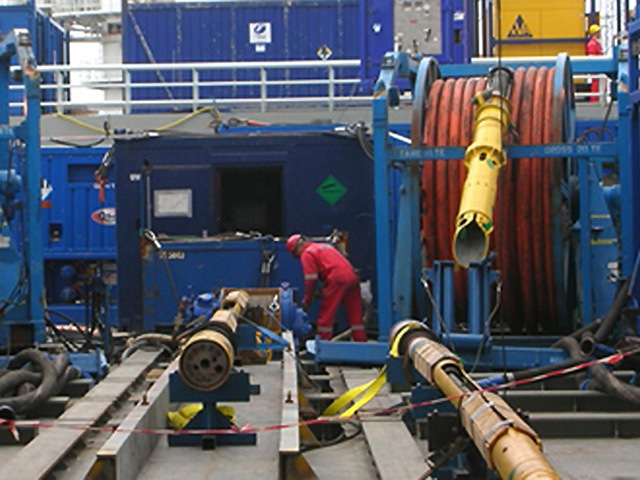
With a new year comes new hope for a return to economic growth in Europe, which may help to provide a much needed spur to the long awaited recovery in the mergers & acquisitions (M&A) market across the continent.
Looking back over 2013 we can see quite a contrast between that general European M&A market and the oil & gas market, both in terms of both E&P and oilfield services deals.
Numbers from the first half of 2013 show European M&A at its lowest in terms of value and volume for three years.
When comparing activity in the first half of 2012 with the same period in 2013, M&A dropped 10% by volume to 2,413 deals and 26% by value to 203.7billion euros.
In Europe, dealmakers’ appetite for inorganic growth has been suppressed with M&A on hold until confidence returns.
Recent years’ events have badly shaken corporates, not only in terms of revenue but also in terms of outlook, and corporate leaders have turned inward, focusing on improving balance sheets and avoiding risk rather than putting their cash to work via acquisitions.
While there may have been some headline-grabbing transactions, particularly in the technology, media, communications (TMT) sector, such as Vodafone and Kabel Deutschland; these figures show that activity in the wider market remained suppressed which is perhaps surprising as many of the fundamentals underpinning the market are stronger than for some time.
These strong underlying fundamentals have had a greater impact in oil and gas, where we have seen continuity in the number of E&P and oilfield services deals done with strong demand for the right type of assets.
The sale of a portfolio of assets by OMV to Statoil ($2.65billion) and the sale of Reservoir Group to Australian Laboratory Services ($533million) during the first half of 2013 are two excellent examples of how demand has remained high.
In particular, oilfield service companies with a buy and build strategy have been busy growing their portfolio during 2013 and the quality E&P assets which have become available have been hotly contested.
The significant issue in E&P in the UKCS has not been the lack of capital or appetite for acquisitions but more that some of the assets coming on to the market have been later-life assets where the abandonment liabilities may deter potential buyers.
The introduction of Decommissioning Relief Deeds by the UK Treasury . . . the first DRDs were signed in October . . . should open up the market in terms of later-life assets as it will significantly reduce the amount of capital tied up in letters of credit.
This historical data is always interesting but for M&A practitioners it is yesterday’s news. What they crave is the crystal ball; a look at where the market is heading.
From a European M&A perspective we have recently conducted research with 255 Europe-based corporate executives about their expectations for the future.
It emerged that 48% of those surveyed believe that M&A levels will increase over the next 12 months with only 10% considering that deals activity will decrease. So this demonstrates real optimism for the near-term future of M&A.
In terms of buy-side drivers, 62% considered that foreign acquirers’ increased appetite would be one of the most important factors.
From a sell-side perspective, 69% expect that businesses will be looking to sell in order to raise capital to expand into fast-growing markets over the next 12 months.
From an oil and gas point of view some of these same drivers are also evident.
Demand remains high for hydrocarbon assets with a number of the largest private equity houses in the world establishing oil & gas sector-focused funds with oilfield service businesses headquartered in Aberdeen being very much on the agenda.
Those funds are likely to play a significant part in the M&A landscape in the next 12 months in both E&P and oilfield services.
Commentators have said that raising institutional funds for investment into oil and gas has been considerably easier than other sectors.
A recent survey has shown that private equity investors into oilfield services see reduced exposure to volatile commodity prices as one of the key drivers from an investment proposition perspective and the diversified geographic position that many Aberdeen-based oilfield service companies have is also attractive.
In terms of E&P, a large number of private equity players see the requirement for significant capital investment as an important reason for their interest in the sector.
Additionally, over the last couple of years we have seen foreign acquirers on the UK Continental Shelf with Asia-Pacific national companies KNOC, CNOOC and Sinopec taking significant positions in the North Sea in terms of their respective acquisitions of Dana, Nexen and a 49% interest in Talisman’s UKCS assets base.
From a sell-side perspective we have seen corporate players in oil & gas off-loading non-core assets in order to invest more heavily in key growth projects for the future and this looks likely to continue to be the case, providing opportunities for foreign investors and PE-backed new entrants to the E&P market.
Although M&A in Europe has been sluggish, the signs are good that the recovery in deal volumes will continue over the next 12 months.
In contrast, oil & gas deals have been strong throughout and the next 12 months looks likely to continue this trend.
Penelope Warne is head of energy, managing director and senior partner elect at international law firm CMS Cameron McKenna
Recommended for you
